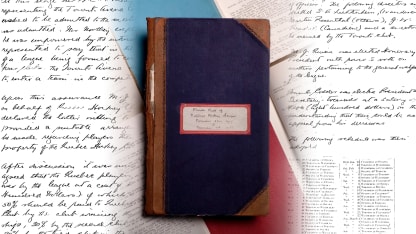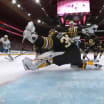The NHA, which began play in 1909, had been beset by franchise problems -- most notably that the league's most popular team, the Toronto 228th Battalion, had been called away to fight in World War I midway through the 1916-17 season, reducing it to a five-team league. The talent market got even tighter after Canada passed the Compulsory Service Act, which took effect in August 1917 and mandated conscription for men ages 25 to 35, a range that covered most players. The NHA announced at its annual meeting it was suspending operations, citing the scarcity of players and saying operating a five-team league was not feasible.
Beginning on Nov. 24, 1917, the NHA's directors, George Kendall (better known as George Kennedy) of the Montreal Canadiens, Sam Lichtenhein of the Montreal Wanderers, Tom Gorman of Ottawa, M.J. Quinn of Quebec and NHA secretary-treasurer Frank Calder, held three days of meetings and decided to start over again. Gorman, seconded by Kendall, proposed, "That the Canadiens, Wanderers, Ottawa and Quebec Hockey Clubs unite to comprise the National Hockey League." The motion was carried, and the NHL was officially formed on Nov. 26, 1917.
The NHL's arrival on the sporting scene wasn't exactly big news back then.
Unlike the unveiling of the Vegas Golden Knights on Tuesday, which attracted worldwide media coverage, the only writer reportedly on hand at the Windsor Hotel was Elmer Ferguson, sports editor of the Montreal Herald. When Calder emerged from the closed-door meeting, Ferguson yelled to him in an effort to find out what happened; Calder replied, "Nothing much, Fergie."
The NHL quickly had a lineup change. Quebec wasn't prepared to ice a team for the 1917-18 season, so the franchise suspended operations until 1919-20 and its players were dispersed among the other teams. However, the Toronto Arena Company was granted a franchise, keeping the NHL at four teams.
Calder was elected president and secretary-treasurer at a salary of $800. More important perhaps was that he took the job, as the minutes note, "on the understanding that there could be no appeal from his decisions."
The new league adopted the NHA's 25-page constitution as its governing document and a 24-game schedule of Wednesday and Saturday games was adopted, with the NHL champion earning the right to play the winner of the Pacific Coast Hockey Association for the Stanley Cup. Though the Wanderers folded after a fire destroyed their arena, Toronto won the championship and defeated the Vancouver Millionaires in a five-game Final, allowing the new NHL to proclaim it was the best professional hockey league in existence.


















